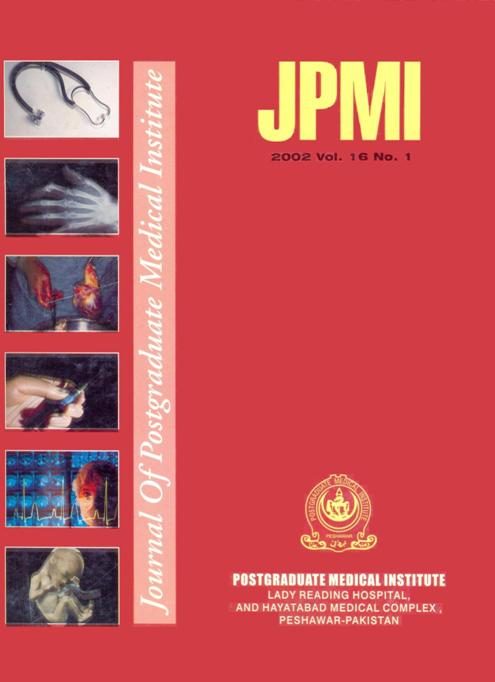Neonatal hyperbilirubinaemia Secondary to erythorcyte Glucose - 6 Phosphate Dehydrogenease Deficiency
Main Article Content
Abstract
This stuy was conducted in the special care baby unit of Khyber Teaching Hospital, Peshawar from July 1998 to June 1999. during his period about 200 newborn babies with hyperbilirubinaemia were studied for the etiological causes. All were full term. Their age ranged from 1 to 7 days. out of these 200 jaundice babies 26(13%) were found to be deficient in G6PD enzyme. The sex ration was M:F 23:3 (88.5% and 11.5%) respectively. Age of appearance of jaundice varied from 1st 24 hours of life upto 5 days (mean 2 1/2 days). Mean serum bilirubin level was 18.7mg%. seventeen (65%) babies developed severe hyperbilirubinaemia (SBR level more than 20mg%) and were given exchange blood transfusion. All of the G6PD deficient babies recieved phototherapy. Two babies (8%) developed bilirubin encephalopathy. Average hospital stay was 7 days. Phototherapy and exchange blood transfusion are effective in reducing the serum indirect bilirubin level but once kernicterus develops. No treatemnt can reverse it. therefore, all jaundiced newborn babies should be screened for G6PD deficiency to reduce the immediate risk of bilirubin encephaloptathy and later on of haemolysis.
Article Details
How to Cite
1.
Khan afzal, Khawar N. Neonatal hyperbilirubinaemia Secondary to erythorcyte Glucose - 6 Phosphate Dehydrogenease Deficiency. J Postgrad Med Inst [Internet]. 2011 Sep. 22 [cited 2025 Dec. 5];16(1). Available from: https://jpmi.org.pk/index.php/jpmi/article/view/751
Issue
Section
Original Article
Work published in JPMI is licensed under a
Creative Commons Attribution-NonCommercial 2.0 Generic License.
Authors are permitted and encouraged to post their work online (e.g., in institutional repositories or on their website) prior to and during the submission process, as it can lead to productive exchanges, as well as earlier and greater citation of published work.


